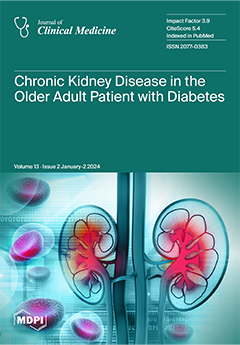Introduction: Pediatric polytrauma is a complex condition with unique characteristics and requirements for early clinical care. This study aimed to analyze the injury patterns, early clinical care, and outcomes of pediatric polytrauma patients in a Level I trauma center. The focus was on
[...] Read more.
Introduction: Pediatric polytrauma is a complex condition with unique characteristics and requirements for early clinical care. This study aimed to analyze the injury patterns, early clinical care, and outcomes of pediatric polytrauma patients in a Level I trauma center. The focus was on evaluation between different age groups and the recognition of injuries as potential factors influencing outcomes.
Methods: A prospective cohort study model of pediatric polytrauma patients (ISS ≥ 16) was conducted over a 13-year period, stratified by age groups (Group A: 0–5 years; Group B: 6–10 years; Group C: 11–15 years; and Group D: 16–18 years). A comparison of the groups was conducted to examine variations in early clinical care, trauma mechanisms, distribution of affected body regions (as per AIS and ISS criteria), and trauma-related mortality. Additionally, factors contributing to mortality were evaluated.
Results: The median age of patients was 16 years, with a male predominance (64.7%). The Injury Severity Score (ISS) varied across age groups, with no significant difference. The 30-day mortality rate was 19.0%, with no significant age-related differences. Trauma mechanisms varied across age groups, with motor vehicle accidents being the most common mechanism in all age groups except 0–5 years, where falls were prevalent. Analysis of injury patterns by AIS body regions indicated that head trauma was a significant predictor of mortality (Hazard Ratio 2.894,
p < 0.001), while chest, abdominal, and extremity trauma showed no significant association with mortality. Multiple regression analysis identified the ISS and preclinical GCS as valid predictors of mortality (
p < 0.001 and
p = 0.006, respectively).
Conclusions: While age-related differences in injury severity and clinical interventions were limited, head trauma emerged as a critical predictor of mortality. Early recognition and management of head injuries are crucial in improving outcomes. Additionally, the ISS and preclinical GCS were identified as valid predictors of mortality, emphasizing the importance of early assessment and resuscitation. A tailored approach to pediatric polytrauma care, considering both age and injury patterns, might contribute to survival benefits in this vulnerable population.
Full article






